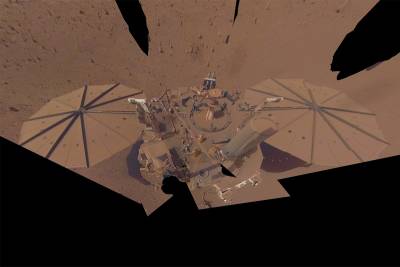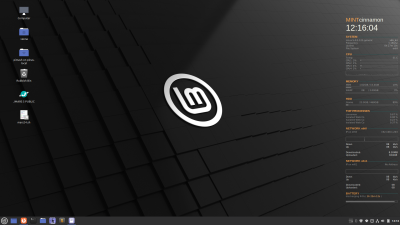Table of Contents
I'm a novelist and have an interest in space science and physics. I've been a programmer for more than 40 years and I like reviewing new and up-and-coming authors. I have become a committed member of the OpenSimulator community.
Please consider registering (see top of page) to help support this site. Your personal data isn't shared with anyone, but it makes me feel good.
InSight's Final Selfie
 The InSight lander is in the final stages of of its extended mission. This image, taken on April 24th 2022, is it's last selfie.
The InSight lander is in the final stages of of its extended mission. This image, taken on April 24th 2022, is it's last selfie.
There was a possibility to keep going until the last operating science experiment had to be turned off, and then InSight would keep operating on safe mode until it eventually ran out of power.
There's always a push to keep an experiment running as long as possible. It tests the experiment to extremis, and it keeps people employed. By running it as long as possible, they also discover the limits of the engineering in the harsh environment. This time though, they decided to turn off safe-mode so the seismometer can keep operating until the end.
2022-07-10 A New Laptop
 I bought a nice, shiny new laptop, which unfortunately came with Windows 11 on it. I immediately installed Linux Mint and some of my favourite apps.
I bought a nice, shiny new laptop, which unfortunately came with Windows 11 on it. I immediately installed Linux Mint and some of my favourite apps.
As you can see from the screenshot, it looks good. It runs well too, taking just 12 seconds to boot from cold to login box, and another 3 secs from login to the desktop.
It's all setup with Wireguard so I can VPN into my home (although that's not needed if I use my phone as a hotspot). Being Mint, I can also use bluetooth (to my phone) to VPN, so that's even neater.
Coffee Blog: 2022-05-15
In 2021 I decided to take my love for coffee a stage further. For quite a few years I'd been making my own blends from pre-roasted beans, and that had met with varying amounts of success (as you can probably imagine). That is until I started getting serious with it and making charts with the various flavours and notes I perceived and what the strengths were of these and whether they were desirable or not. For example, I might taste a berry flavour, and depending upon how strong that flavour was I'd give it a numerical value. If it was undesirable, it was a negative value.
Using these charts I could blend different beans (they might be roasted lighter or darker, or be from different regions) and in the right ratios, the negative flavours could be minimised and the desirable flavours enhanced. With a bit of skill and experience, the right flavours could be balanced - you do have the numbers after all. It's a simple but very effective system.
It stands to reason then, that one day I'd want to start roasting my own beans.
Adding a Chromebook
I have a network with wiki-farm server to support my writing, a NAS and a home-made laptop. All of these things are based on Raspberry Pi's. Besides using the wiki-farm (which is used to write novels), I also use Zim-Wiki for making copious notes, character creation, world-building and plot development. Zim-Wiki is available on both Linux and Windows, and there is an ARM build that runs happily on the Raspberry Pi. And then I added a Chromebook, and that went from good idea to nightmare and back again.

